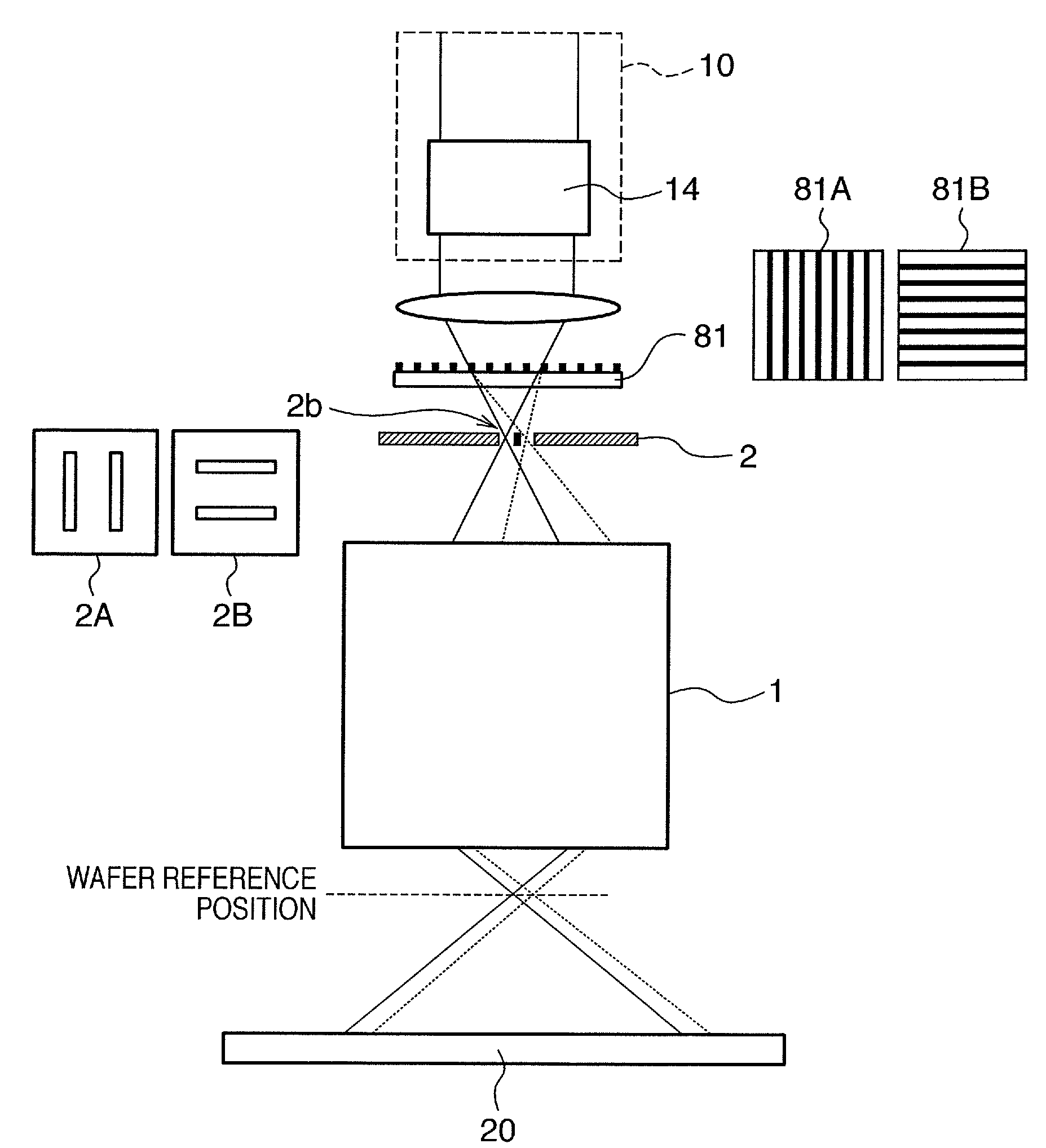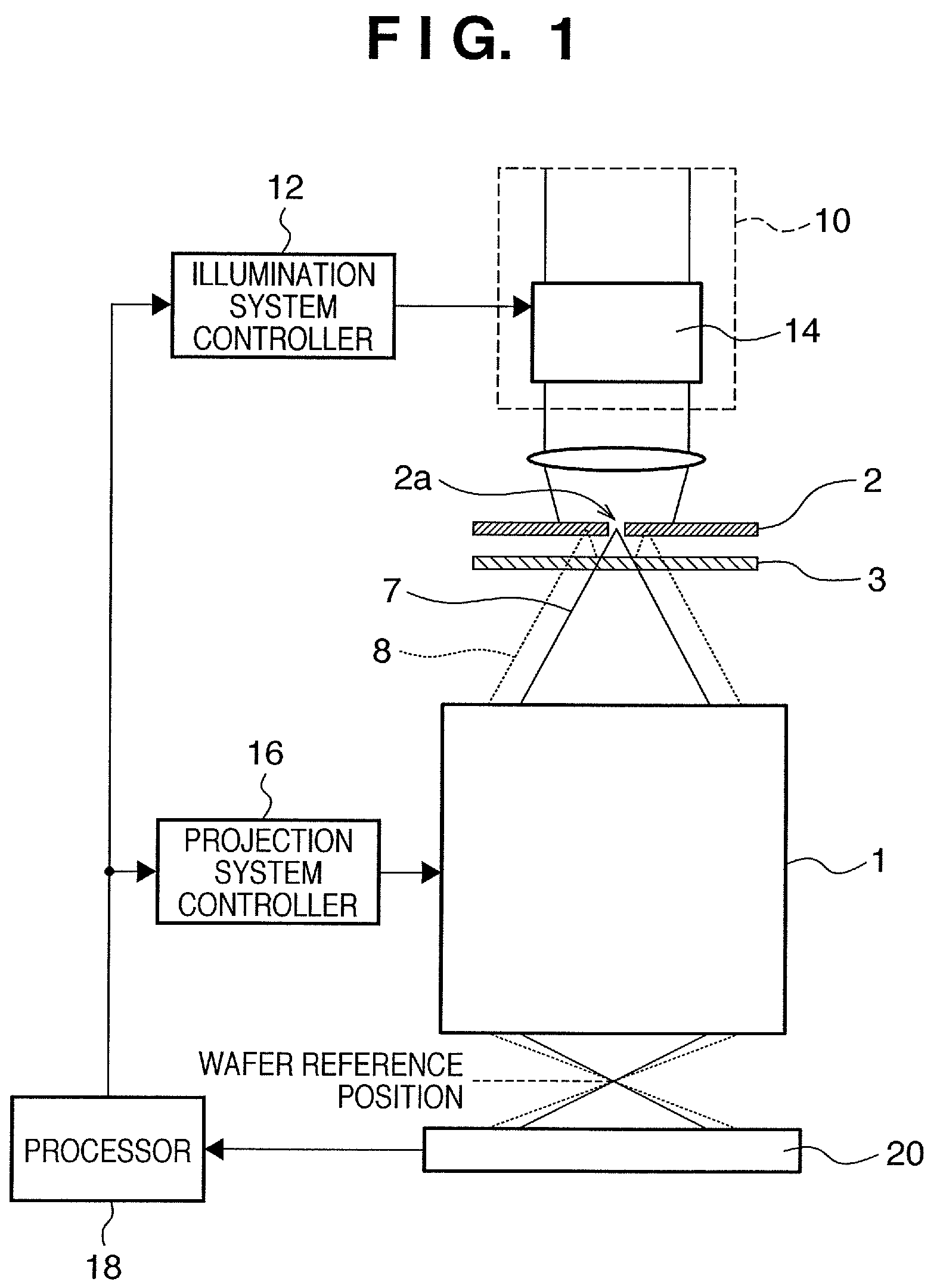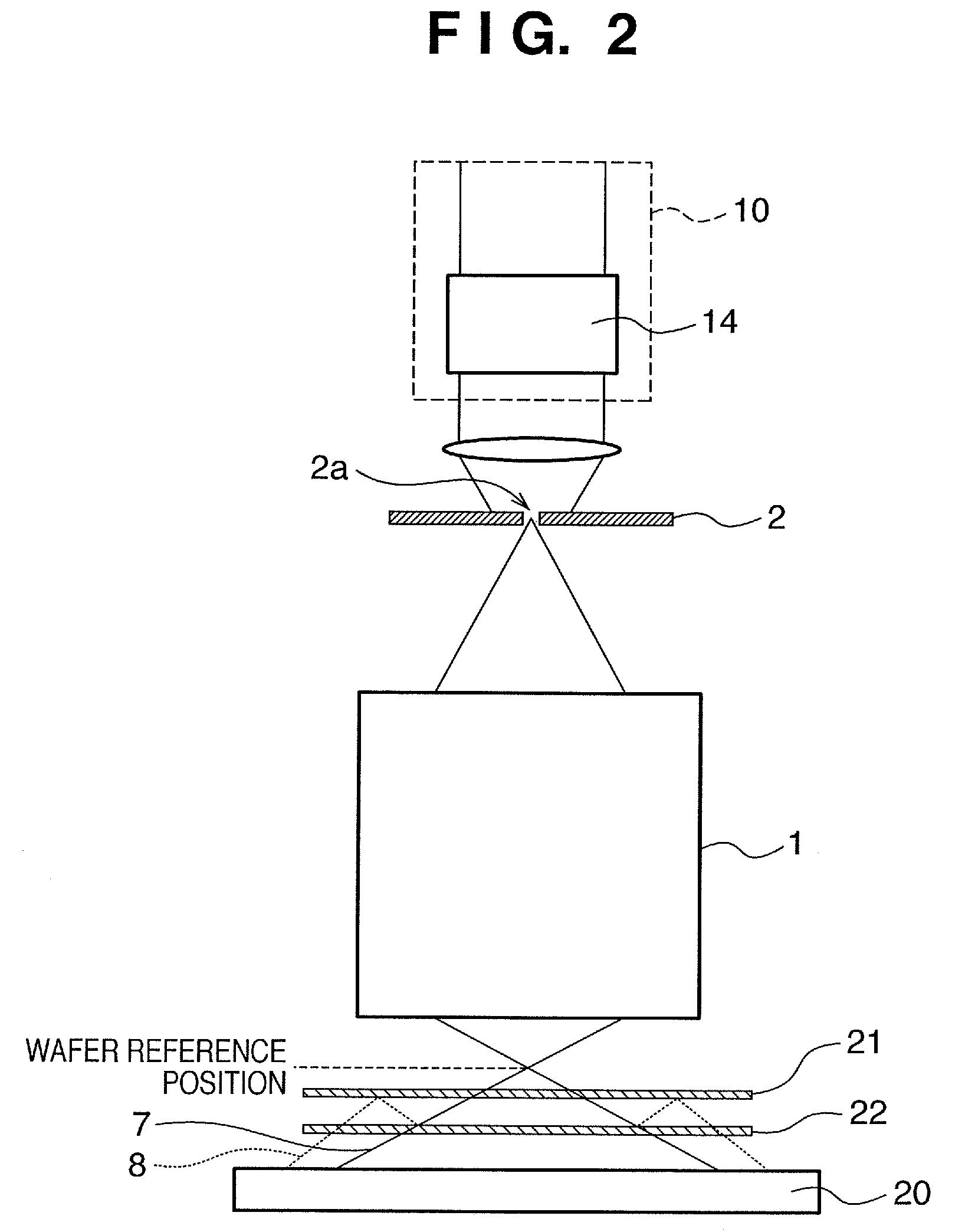Exposure apparatus and device manufacturing method using a common path interferometer to form an interference pattern and a processor to calculate optical characteristics of projection optics using the interference pattern
a technology of interferometer and manufacturing method, which is applied in the direction of measurement devices, instruments, photomechanical treatment, etc., can solve the problems of affecting the polarization state and affecting the polarization of the projection optics
- Summary
- Abstract
- Description
- Claims
- Application Information
AI Technical Summary
Benefits of technology
Problems solved by technology
Method used
Image
Examples
first embodiment
[0051]An exposure apparatus according to the first embodiment of the present invention will be described with reference to FIG. 1. The first embodiment provides an exposure apparatus that includes means for measuring non-polarization aberration and polarization aberration, which are the optical characteristics of the projection optics, using a radial shear interferometer (RSI). An example will be described in which, of the optical characteristics, aberration that does not depend on polarization is defined as non-polarization aberration and aberration that depends on polarization is defined as polarization aberration, and retardation and azimuth of birefringence are to be measured as polarization aberration.
[0052]In ordinary exposure, light provided by an illumination system 10 illuminates an exposure reticle (original), and the pattern of the reticle is projected onto a wafer (substrate) set at a wafer reference position through projection optics. The wafer reference position is ide...
second embodiment
[0119]An exposure apparatus according to the second embodiment of the present invention will be described with reference to FIG. 2.
[0120]The second embodiment of the present invention provides another arrangement of the exposure apparatus that has a function of measuring non-polarization aberration and polarization aberration (retardation and azimuth), which are the optical characteristics of the projection optics, with a radial shear interferometer. An illumination system controller 12, a projection system controller 16, and a processor 18 are identical to their equivalents in the first embodiment.
[0121]In the second embodiment of the present invention, when measuring the wavefront of projection optics 1, a measurement reticle 2, having a pinhole 2a, is arranged at a reticle position, and first and second measurement substrates 21 and 22 are arranged between the projection optics 1 and an image sensor 20.
[0122]An ideal wavefront free from aberration at an illumination system 10 is ...
third embodiment
[0129]An exposure apparatus according to the third embodiment of the present invention will be described with reference to FIG. 3.
[0130]The third embodiment of the present invention provides an exposure apparatus in which a lateral shearing interferometer (LSI) measures non-polarization aberration and polarization aberration (retardation and azimuth), which are the optical characteristics of the projection optics. Since this lateral shearing interferometer is a common path interferometer, its optical path and arrangement are simple and little affected by the vibration of the exposure apparatus. An illumination system controller 12, a projection system controller 16, and a processor 18 are identical to their equivalents in the first embodiment.
[0131]In the third embodiment of the present invention, when measuring the wavefront of the projection optics 1, a measurement reticle 2, having a pinhole 2a, is arranged at a reticle position, and a two-dimensional diffraction grating 31 is ar...
PUM
 Login to View More
Login to View More Abstract
Description
Claims
Application Information
 Login to View More
Login to View More - R&D
- Intellectual Property
- Life Sciences
- Materials
- Tech Scout
- Unparalleled Data Quality
- Higher Quality Content
- 60% Fewer Hallucinations
Browse by: Latest US Patents, China's latest patents, Technical Efficacy Thesaurus, Application Domain, Technology Topic, Popular Technical Reports.
© 2025 PatSnap. All rights reserved.Legal|Privacy policy|Modern Slavery Act Transparency Statement|Sitemap|About US| Contact US: help@patsnap.com



